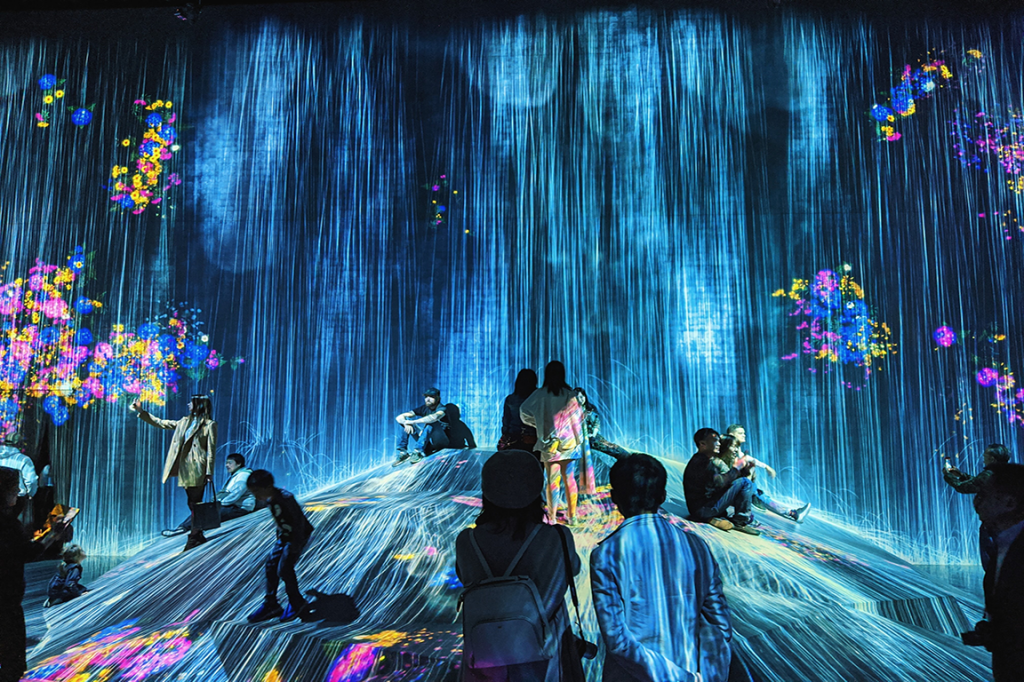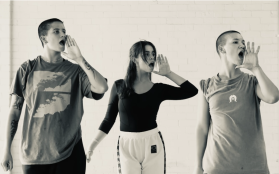If COVID has taught us anything, it is the depth of our reliance on the digital space. Whether it be for work, entertainment or social connection, digital literacy has become a vital tool in our kit of skills.
But many of us still feel inadequate, wondering whether are we doing it right or doing enough, or perhaps we hold the misconception that it takes time and money to escalate our activities. A new course, developed by the University of Technology Sydney, in conjunction with the Australia Council for the Arts by creatives for creatives, is designed to equip individuals and organisations with digital skills to not just survive, but thrive in this new digital future.
Dr Sunil Badami, Lead Academic and Facilitator behind the short course, Digital Transformation for the Creative Industries, says: ‘Some may say, “I don’t want to engage with technology”, but it’s like electricity – it’s here to stay, and turning away from it isn’t an option. So how do you leverage it in the best possible way for you, your organisation, and your creative and business practices?’
Over 300 creatives who applied via the Australia Council have now completed the course this past year to rave reviews and it is now being offered to the public.
‘It’s really exciting because it means people across the country, across sectors, and across practices can come together with a digital mindset,’ says Badami.
‘We’ve brought together a wide range of UTS academics who’ve worked not only in the digital space but also as creatives – as well as artists, festivals, performance companies, museums that have worked digitally – to talk about how they responded to the enforced digitalisation brought about by lockdown — and the opportunities that has also presented.’
Drawing on Bill Gates’ quote in his book, The Road Ahead that “we overestimate what we do in a year, but underestimate what we do in a lifetime,” Badami reflects that we often overestimate the impact of technology in the short term, but underestimate its influence in the long term.
No one wrote better with a more expensive pen! Digital tech is only a tool that is used to meet your audience.
Dr Sunil Badami
‘Just think of the iPhone and Google glasses. It’s not always about the next big thing but [rather] keeping it simple, and recognising why we [embrace technology], and who we do it for. Then it’s easy to select the appropriate tech mix for you, your team and your audiences, and within your capabilities and budget,’ Badami says.
Why digital is important for those working in creative industries
Aside from his academic credentials, Badami is a writer, broadcaster and performer, who’s consulted to and sat on the boards of numerous arts organisations. He describes the course as in sync with a creative mindset and pathway.
‘Because technology seems to be changing so fast all the time, we feel we have to keep up – that we have to respond reactively to what others are doing. But this is about aligning your medium- to long-term goals and creative visions with all the possibilities digital technology can offer.’
Some of those creatives include the celebrated filmmaker Lynette Wallworth; internationally renowned media artist Shaun Gladwell; academic, advocate and artist Larissa Behrendt; Caroline Spence, who has just joined the Sydney Theatre Company (STC) after six years at Sydney Dance Company (SDC); and peers from Accessible Arts Australia and the Regional Arts Australia network.
Badami points out that ‘art is also a business, and while it would be great if we could just survive and not have to sell or market our work, the fact is we have an uncertain funding environment. It will really pay for you to harness the power of digital technology.
‘We want people to see a clear narrative of all the possible areas they can explore – how to create a safe, diverse digital community; what are the different monetisation models; and how to do a digital audit – not just hardware and software, but also to understand what your community is using and how they engage both digitally and IRL (in real life).’
Badami speaks of Spence’s success with SDC’s digital transformation, which allowed for new income streams. ‘They found that live streaming dance classes meant they could keep their performers employed and paid [during lockdowns], but they expanded their audience far wider than the geography of Sydney.
‘Those recorded classes also [allowed for] an additional passive income stream when viewed online, and are now part of different subscription offerings, both as live and digital experiences. So, all of a sudden, their audience is not only greatly expanded through lockdown, but is ongoing.’
Badami says the course is a good fit for ‘anyone in the arts trying to find ways to engage with audiences outside their existing catchment zone, and new ways of engaging them online.’
And the course…
Badami says, ‘It has to be fun, it has to be engaging and it has to be relevant!’
‘We designed this course for someone like me – if I’m not engaging, then you have lost me; if I can’t do it, then you have lost me – and a big part of it is making it real, so you are drafting your own digital strategy, or your own digital audit, or mapping your digital journey,’ says Badami.
‘One of the great things about the course is it’s not just a plethora of links and resources, but it gives you a number of activities that you can apply, and [flesh out] some of the concepts or tech we have discussed to really understand them practically. This aligns with the UTS focus on engaging and authentic learning experiences.
‘Everything we do today is digital, which is why we approach the course digitally. We meet on Zoom for an hour a week over the six weeks,’ he says.
‘Think of it almost like a tasting plate – where you take the things that will work best for you, and become aware of the concepts or ideas that are available to enhance your practice.’
He adds that the course is a ‘bit of a hothouse’ for ideas and sharing.
It was fantastic – my head’s full and I’ll apply these learnings for many years to come.
Mary Anne B, NSW writer
‘The [real gem] of this course is that you are having real-life conversations with peers across different sectors and different parts of the country. It is an incredible network, and will help you see clearly what you do, through the way they work.’
Badami continues, ‘We often get siloed in our own sectors and practices, but when you put different artforms around the table together you can reappraise what you do. The interesting thing is, as creatives, you’re the perfect people for digital transformation. Why?
‘You need to be curious – fearless – and have an interest in engaging with others, and be willing to consider the opportunities.’
He concludes that no formal qualifications or previous digital experience or abilities are needed for this course.
UTS is currently calling for 2023 participants for the Digital Transformation for the Creative Industries Open Short Course, which kicks off mid-January 2023.





